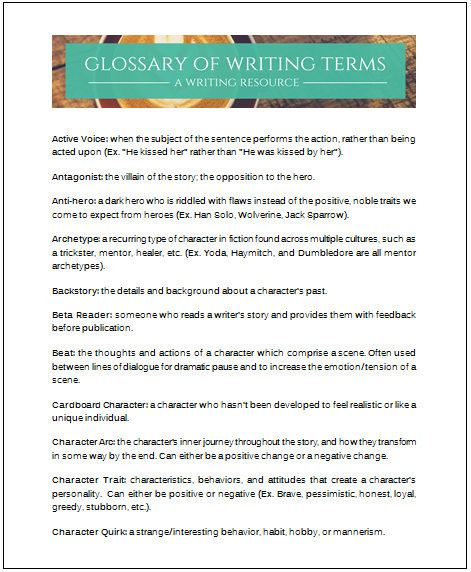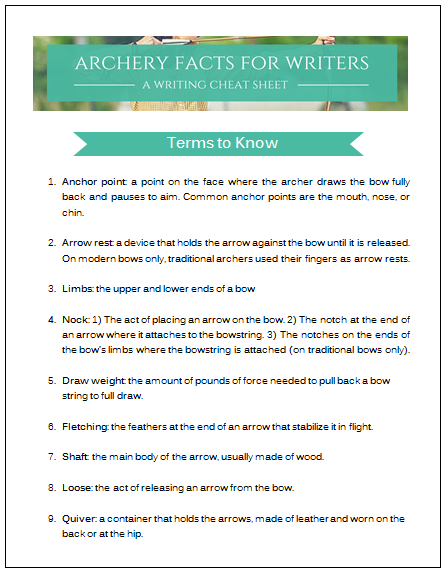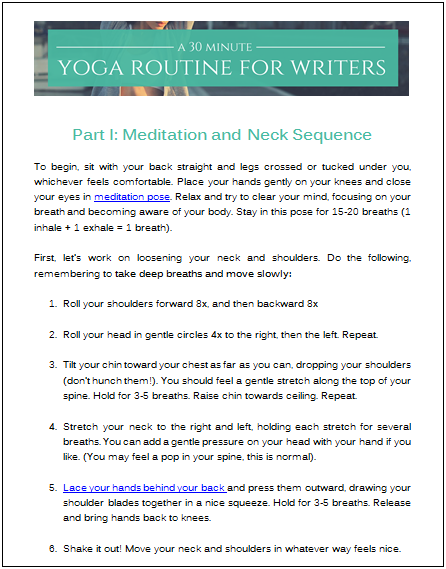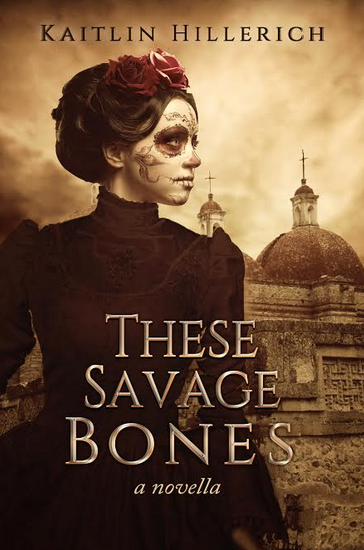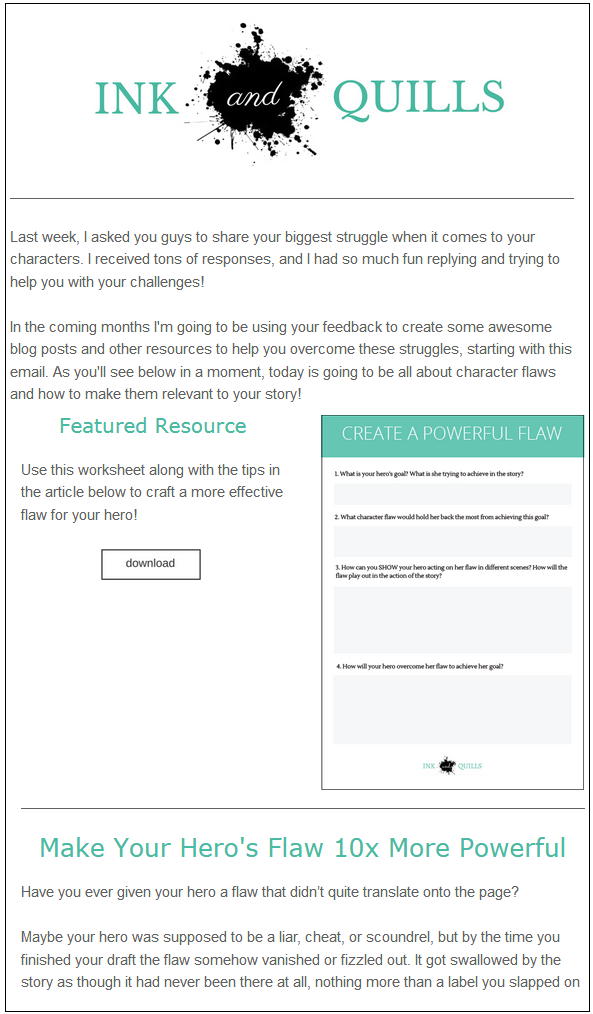 The following is a guest post from Katja Kaine, writer, blogger, and creator of The Novel Factory writing software.
The following is a guest post from Katja Kaine, writer, blogger, and creator of The Novel Factory writing software.
When I first started writing a novel, I felt like I was stumbling around in the dark.
I wandered around for a while making a lot of false starts, finding dead ends, backtracking, and staring into the darkness. But slowly, I learned the lay of the land as I wrote my first novel. Rather than repeat this tedious and time-consuming process for each subsequent novel, I decided I needed to plan a more concise route for next time.
And so my Novel Writing Roadmap was born.
It describes each of the steps I follow to take my novel from concept to completed manuscript. It’s the guide I wish I had been handed when I first started, and I hope it will save a lot of headaches for new writers.
In this article I’ll be giving you an overview of my novel-writing process. To help make this process easier, I’ve also developed the Novel Factory software to give writers extra guidance and support, and you can learn the full details about that here.
It’s important to know that this method will not teach you to write well. I don’t go into a lot of detail about showing not telling, adverb use, punctuation and grammar, and all that jazz. It also cannot give you good ideas or write your novel for you. What it will do is teach you how to turn your story idea into a fully-fledged, well-structured manuscript. It is a map, and you will have to do the walking.
Here is an overview of the steps:
- Premise
- Skeleton
- Character Introductions
- Short Synopsis
- Extended Synopsis
- Goal to Decision Cycle
- Character Development
- Location Development
- Advanced Plotting
- Character Viewpoints
- Scene Blocking
- First Draft
- Theme and Variation
- Second Draft
- Final Draft
Now we’ll look at each step in more detail.
Premise
Right. Let’s get started. You’ve probably got an idea for a story. But if your idea is going to turn into a novel we need to make sure it’s got all its arms and legs. So take your idea and make sure it has:
- a protagonist
- a goal
- a setting
- an antagonist
- a disaster
Here’s an example:
- a protagonist – Joanna the plumber
- a goal – save earth from alien attack
- a setting – Earth 2050
- an antagonist – aliens
- a disaster – the government turn on her
Put all those ideas into a single sentence, like this: When aliens attack Earth in the year 2050, can Joanna the plumber save the human race before the traitorous government manage to turn her into a scapegoat for the whole disaster?

Skeleton
There is an established set of story beats that the vast majority of blockbuster movies and books follow to create a satisfying story arc, so I recommend following these closely when you’re first starting out.
Each of these beats can be interpreted in an infinite number of ways, so don’t be worried that it means your story will be like all the others. Also, once you’ve mastered them, you can deviate to your heart’s content. Here they are:
Act 1
- Introduction to the protagonist’s world
- Call to action / inciting incident
- Protagonist commits to the goal
Act 2
- Mentor teaches the protagonist
- First challenge
- Temptation
- Dark moment
Act 3
- Final Conflict
- Return home
Expand your premise to include each of these story beats.
Character Introductions
Your characters are the life blood of your story, so it’s good to get to know them nice and early. For step three, make notes on all the major characters in your story. Don’t worry about getting too in-depth at this stage, we just need an outline of the key broad brushstrokes of their personality, appearance and motivation. I recommend making notes on at least the following:
- Name
- Age
- Occupation
- Physical appearance
- Key character traits
- Motivation
- Summary of their role in the story

Short Synopsis
This is simple. Expand your story skeleton until it is about a page long. It should include all the key elements of your plot and anything else you think is important.
Note the word ‘short’. You will be tempted to put in much more, but the short synopsis is deliberately constrained to make you think hard about what is of key importance. You can add in more detail in the next stage.
Extended Synopsis
Now go through the Short Synopsis adding detail until it is about four pages long.
The Goal to Decision Cycle
Before you get too much further with the plot, you need to make sure it’s well structured, and not simply meandering around all over the place. One method of doing this is to pin each section to the Goal to Decision Cycle, which works like this:
Your character has a GOAL.
But when they are trying to reach that goal they encounter CONFLICT.
Things escalate and end in DISASTER.
Your character has an emotional REACTION to the disaster.
They are faced with a DILEMMA with no good options.
They make a DECISION.
Which means, your character has a new GOAL.
If you go through your story and try to identify or create each of these elements (GOAL, CONFLICT, DISASTER, REACTION DILEMMA, DECISION) then you will create a story that has momentum and feels logical to the reader, even if they don’t know why.
Note that these elements do not need to have equal weight, and how much attention you give to each of them will affect the shape and feel of your story. More exciting adventure stories will emphasize the goal to disaster section and only have a brief pass over the reaction to decision, whereas more philosophical stories will do the opposite.
Character Development
The story is really taking shape now, so let’s spend a little more time with our characters while that settles. There are a few methods you can use to get under your characters’ skin. Here are my favorites:
- Consider their history, including: infancy, childhood, teen years, young adulthood etc., up to where they are now
- Complete a questionnaire for them – this helps you think about new and interesting angles.
- Think about what they ‘want’ as opposed to what they ‘need’
Location Development
The title of this step is fairly self-explanatory. Take some time to make a list of all of your locations and make some notes about them. I like to think about all the senses, how each location changes in different scenes, how it reflects the mood and character, and I like to try to find some pictures and blueprints to aid inspiration and clarity whenever possible.
Advanced Plotting
During this step we take some time to look at the overview of our novel and make sure we have all our ducks in a row. Think about character development, plot threads, important items, clues, and foreshadowing. Make sure all of these elements tie in nicely, because it’s much easier to figure these things out now than to realize when you’re 50,000 words in that there’s a major flaw.
Character Viewpoints
The last step before you start sketching out your first draft (or pre-first draft, but we’ll get to that) is to go back and give all of your major characters their moment in the limelight. This means going through the story from their point of view.
This is a fantastic practice, because not only does it help you to develop each of the characters so that they are people in their own right and not just flat sidekicks for the protagonist, but you will add much more texture and depth to the story as a whole.
Seeing the story from the point of view of another character means you may see options the protagonist didn’t. Or you may realize that the best friend had a headache when the protagonist walked in, so instead of being clear headed and helpful, she is ratty and obstructive.
Scene Blocking
This is the last step before you actually start writing your novel properly, I promise. This is a sort of pre-first-draft. It’s not a first draft because you’re not writing actual prose; instead, you’re writing an outline about what happens in each scene beat by beat, sort of like stage directions in a play.
This stage means you can get the gist of each scene pinned down quickly, without worrying about what words you’re using or exact dialogue. Write the story all the way through in the present tense, without worrying about style. Just describe what happens in each scene, once thing after another.
First Draft
You made it! You’re ready to write your first draft. It may feel like it’s been a slog to get here, but the advantage of this is that you can probably get your first draft done in a month or so, and it will be in a hell of a lot better shape than if you hadn’t done all that planning.
When writing your first draft, don’t worry about good writing – just barrel on through as fast as you can and don’t look back. The purpose of the first draft is to get the words down. The purpose of the second draft is to make the words good.

Theme and Variations
You’ll probably have learned a lot during the process of writing your first draft, and hopefully made a bunch of notes. Although you may be raring to get started on your second draft, it’s worth taking a little break to let things settle.
During this time you could make sure all your notes are in the right place, revisit your sub plots, and also consider themes and foreshadowing.
Second Draft
Now you’re really getting somewhere. Go through your first draft and make it better. Sort out the grammar and punctuation, get rid of any clichés, cut repetition, make sure you’re showing not telling, and weed out unnecessary adverbs. Make it shine.
Final Draft
If you have access to feedback, then get it and use it. During the final draft you have to be patient, ruthless and have painstaking attention to detail.
Now it’s basically just a matter of editing over and over again until your fingers are bleeding or you’ve lost your mind. Once either of those two things happens, it’s probably time to draw a line in the sand and call the novel finished.
Summary
Hopefully you’ve found my novel writing process useful, and some of the stages might help you formulate your own process and achieve your dream of writing a novel that will make you proud.
What does your writing process look like? I’d love to hear about it! Let me know in the comments below, or you can chat with me on Twitter or Facebook.
About the Author
 Katja L Kaine lives in a hippyish commune in Yorkshire with her husband, two cats, dog, escapologist baby, a chess genius and a Pole.
Katja L Kaine lives in a hippyish commune in Yorkshire with her husband, two cats, dog, escapologist baby, a chess genius and a Pole.
She spends her time furiously writing novels and short stories at breakneck speed and then pedantically combing through every word to transform them into something vaguely readable.
She is also the creator of The Novel Factory, a writing software that helps writers structure and develop their novels. You can learn more about The Novel Factory here, or browse more useful articles on writing at The Novel Factory Blog.





















